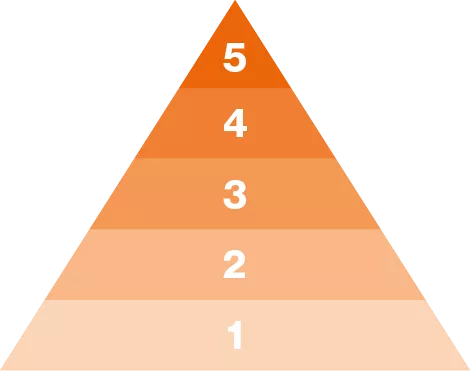This link will take you to the electronic medicines compendium (emc) website, which is a non-Novartis website.


European Society for Medical Oncology Magnitude of Clinical Benefit Scale (ESMO-MCBS)
Indications:1
KISQALI® (ribociclib) is indicated for the treatment of women with hormone receptor (HR)-positive, human epidermal growth factor receptor 2 (HER2)-negative locally advanced or metastatic breast cancer in combination with an aromatase inhibitor or fulvestrant as initial endocrine-based therapy, or in women who have received prior endocrine therapy
In pre- or perimenopausal women, the endocrine therapy should be combined with a luteinising hormone-releasing hormone (LHRH) agonist
KISQALI is not recommended to be used in combination with tamoxifen.
To learn more about the safety profile of KISQALI, visit our portal page here.
For full safety profile information, please refer to the KISQALI Summary of Product Characteristics.
ESMO-MCBS: Scoring KISQALI
ESMO clinical practice guidelines:
The ESMO-MCBS was developed to promote the scientific integrity of ESMO and of oncologists, and in particular to:5
Reduce bias in data interpretation and analysis and enhance critical appraisal of the evidence
Reduce hype
Provide robust validation with strict adherence to standards for ‘accountability for reasonableness’
For the full safety profile, please refer to the KISQALI Summary of Product Characteristics.
Find out more about the overall survival data of KISQALI
Discover the quality of life data of KISQALI
Discover the safety profile of KISQALI + ET1,5,6
ET is defined as AI or fulvestrant1,6,7
KISQALI is not recommended to be used in combination with tamoxifen.1
Across all three MONALEESA trials, progression-free survival was the primary endpoint, overall survival and quality of life were the secondary endpoints.4,8,9
1L, first-line; 2L, second-line; aBC, advanced breast cancer; AI, aromatase inhibitor; CDK4/6i, cyclin-dependent kinase 4/6 inhibitor; ESMO-MCBS, European Society for medical oncology magnitude of clinical benefit scale; ET, endocrine therapy; HER2–, human epidermal growth receptor 2-negative; HR+, hormone receptor-positive; LHRH, luteinising hormone-releasing hormone.
References:
KISQALI® (ribociclib) Summary of Product Characteristics.
European Society for Medical Oncology. ESMO-magnitude of clinical benefit scale. Available at: https://www.esmo.org/content/download/288502/5736211/1/esmo-mcbs-booklet.pdf [Accessed October 2025].
European Society for Medical Oncology. Ribociclib. Available at: https://www.esmo.org/guidelines/esmo-mcbs/esmo-mcbs-for-solid-tumours/esmo-mcbs-scorecards?mcbs_score_cards_form%5BsearchText%5D=ribociclib [Accessed October 2025].
Tripathy MD, et al. Lancet Oncol 2018;19(7):904–915.
European Society for Medical Oncology. About the ESMO-MCBS. Available at: https://www.esmo.org/guidelines/esmo-mcbs/about-the-esmo-mcbs [Accessed October 2025].
Borstnar S, et al. Radiol Oncol 2022;65(2):238–247.
Jackisch C, et al. Poster presentation P4-01-01. San Antonio Breast Cancer Symposium. 6–10 December 2022, San Antonio, USA.
Hortobagyi GN, et al. N Engl J Med 2016;375(18):1738–1748.
Slamon DJ, et al. J Clin Oncol 2018;36(24):2465–2472.
UK | October 2025 | 442291-1
Adverse events should be reported. Reporting forms and information can be found at www.mhra.gov.uk/yellowcard. Adverse events should also be reported to Novartis online through the pharmacovigilance intake (PVI) tool at www.novartis.com/report, or alternatively email [email protected] or call 01276 698370.



